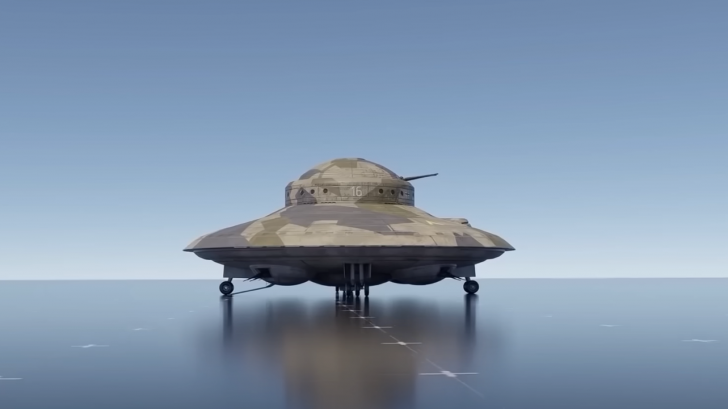1. Lippisch P.13a

The P.13a was a coal-powered flying triangle designed to intercept Allied bombers and smash into them – yes, just like the Gotha Rammer. This time, however, its wings were expected to do the damage.
Its wings were swept back at 60 degrees with a large singular fin and rudder fitted into where the cockpit was located. If high-speed wind tunnel tests were accurate, then the P.13a would be capable of Mach 2.6.
A liquid-fueled rocket engine was planned to be used for takeoff in order to get the aircraft to ramjet operating speeds. Since fuel was running out by the end of the war, powdered coal was used in the ramjet.
2. Focke-Wulfe Triebflügel

Tail-sitter designs are something that has been tried over and over again throughout history. However, the Focke-Wulf Triebflügel was the first fighter that incorporated the concept into its design during WWII. It featured three wings mounted radially on a rotating section which would then be driven by smaller jet engines on the wingtips, propelling the aircraft via wing rotation.
During takeoffs and landings, the plane would fly vertically before tilting horizontally to fly “normally.” This design only reached wind tunnel testing as the Allies seized their production facilities shortly after.
3. Horten Ho 229

The Ho 229 was the first jet-powered flying wing designed to reach a thousand kilometers of range and speed. What makes this plane interesting is that it doubled its distance reached from 621 mi to 1,200 mi. Still, its speed was not very impressive, struggling to get up to 600 mph.
4. Horten H.XVIII

It didn’t take long for the Horten brothers to design the Horten Ho 229’s big brother – the Horten H.XVIII intercontinental bomber. The new design was an upscaled version of the Ho 229 and was one of the many proposed designs for the “Amerikabomber”. It would have had a crew of four, a length of 62 ft, and a wingspan of 131 ft.
The flying bomber was expected to use six Jumo 004B turbojets buried into its fuselage with air intakes on the wings’ leading edge. With these engines, the plane would have cruised at 470 mph and “would be able to reach America and drop bombs over New York.”
5. Silbervogel aka Silver Bird

A sub-orbital bomber designed to destroy New York (again), the Silbervogel could reach long distances in a series of “hops” – or so they thought. It would begin its mission propelled along a 2-mile railway track by a rocket-powered sled. Once airborne, it would fire its own rocket engine and climb to an altitude of around 450,000 ft while traveling at around 13,000 mph before descending into the stratosphere.
The density of the air would then generate lift against its flat underside, causing it to bounce and gain altitude again. It was expected to bounce along the top of the atmosphere until it crossed the Atlantic to drop a 9,000-lb bomb toward the United States.
Well, as it turns out, they miscalculated everything that made the bomber useful. If it pushed through, the aircraft would be nothing more than fireworks in German skies as it would have burned up on each hop.



